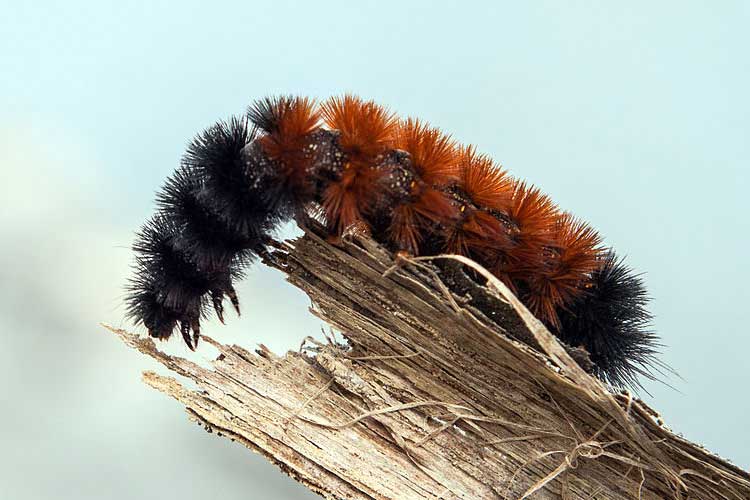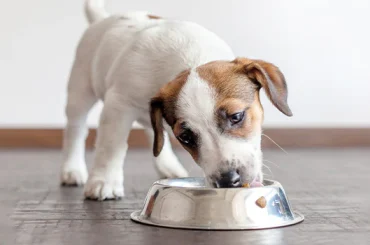Table of Contents
Have you ever seen caterpillars on roses and wondered if they could harm your furry friend? Well, you’re not alone. Many dog owners have pondered this question. In this simple guide, we’ll know whether these caterpillars can be dangerous to dogs. Caterpillars on roses are a common sight in gardens.
They come in various shapes and sizes, often sporting bright colors that catch our eye. Dogs, with their curious nature, might be tempted to sniff or even nibble on these interesting insects. But here’s the thing: not all caterpillars are created equal. Some are harmless, while others can cause problems for your companion.
As responsible pet owners, it’s important to know which caterpillars to watch out for and what to do if your dog encounters them.
Why Some Caterpillars Can Harm Dogs
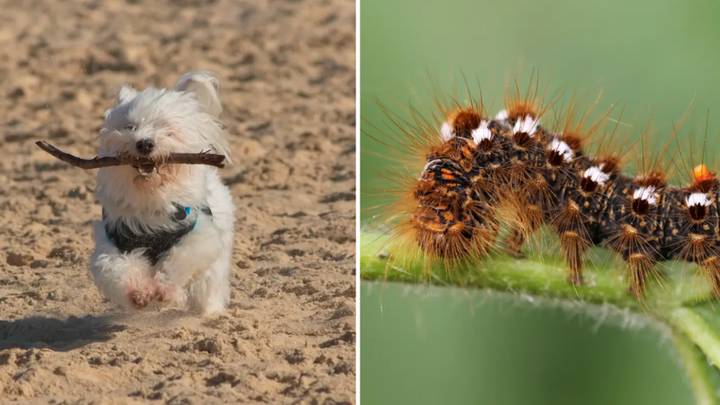
Caterpillars, those fuzzy and crawling creatures, might seem harmless, but some types can pose a threat to our furry friends, especially dogs. The danger lies in the tiny weapons these caterpillars possess in their hairs. These hairs can carry venomous substances that cause irritation or worse when they come into contact with a dog’s skin or when a dog accidentally ingests them.
Caterpillars that are Dangerous for Dogs
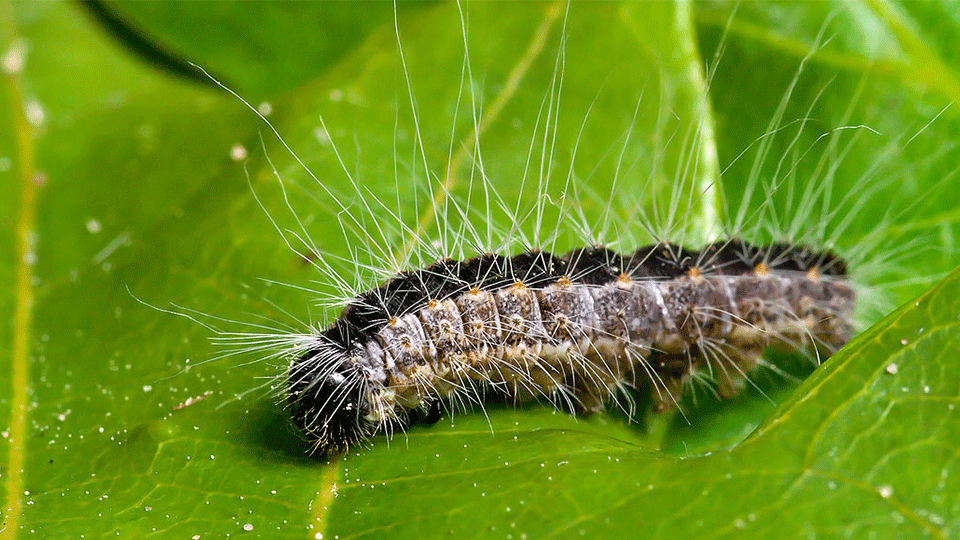
Caterpillars, those fuzzy and often colorful creatures, might seem harmless, but some types can pose serious risks to our furry friends. Dogs are naturally curious creatures, and their playful nature can sometimes lead them to interact with things they shouldn’t, like certain caterpillars.
Here are four types of caterpillars that can be dangerous to dogs: the Asp, Buck Moth, Io Moth, and Saddleback.
1. Asp
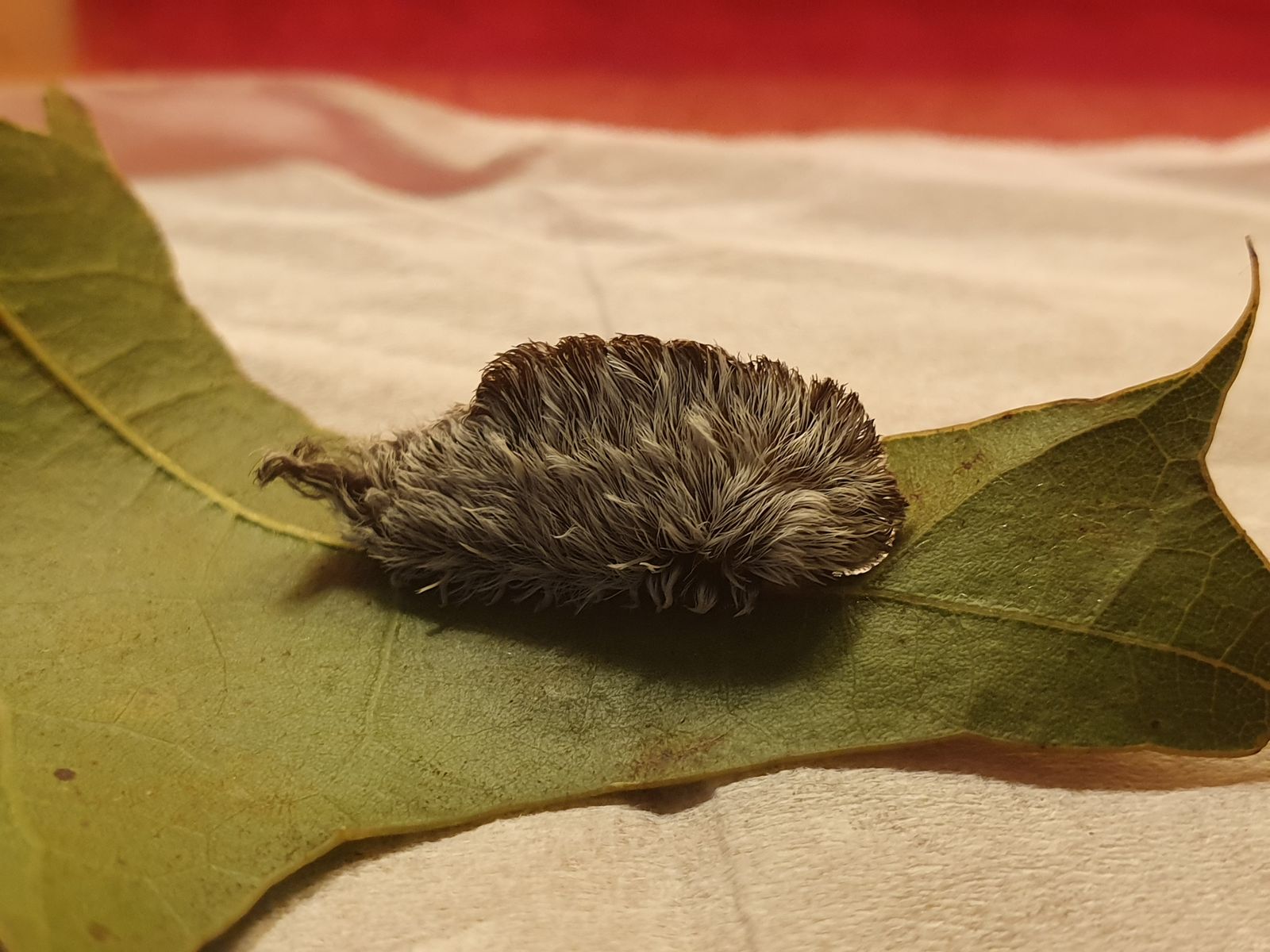
The Asp caterpillar might appear innocent with its soft-looking hairs, but don’t be fooled. Hidden within those hairs are venomous spines that can cause intense pain and discomfort to both dogs and humans. If your dog comes into contact with an Asp caterpillar, it might experience symptoms like swelling, redness, and a burning sensation around the affected area.
2. Io Moth
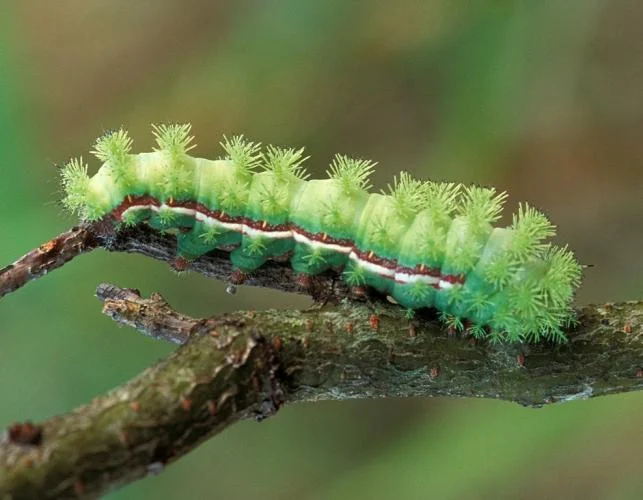
The Io Moth caterpillar might resemble a tiny plush toy, but it’s far from harmless. This caterpillar’s spines contain venom that can lead to symptoms such as swelling, itching, and even systemic reactions. Dogs that accidentally come into contact with the Io Moth caterpillar might display signs of discomfort like excessive scratching or licking.
3. Buck Moth
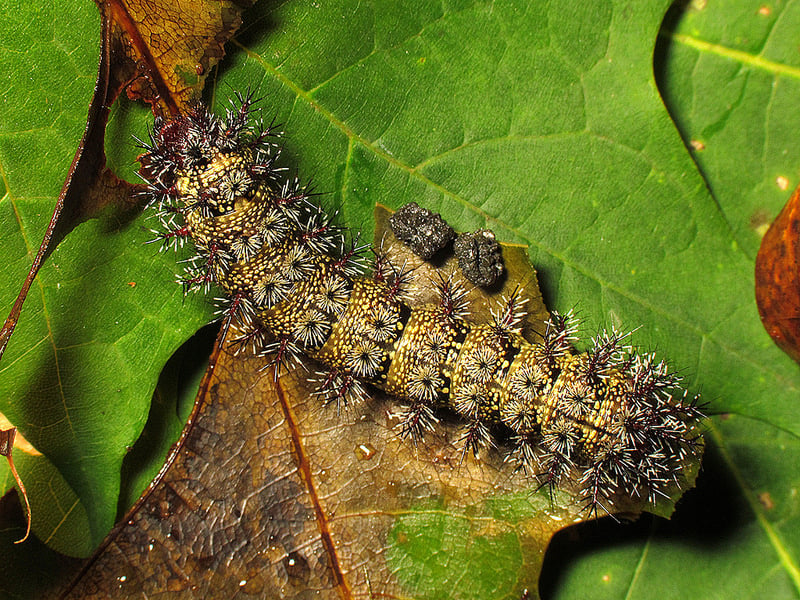
The Buck Moth caterpillar might catch your eye with its vibrant colors, but it’s not a critter you want your dog to mess with. The spines on this caterpillar contain toxins that can cause reactions ranging from mild irritation to more severe symptoms like vomiting and difficulty breathing. It’s crucial to watch for these caterpillars, especially in outdoor spaces where your dog loves to tour.
4. Saddleback
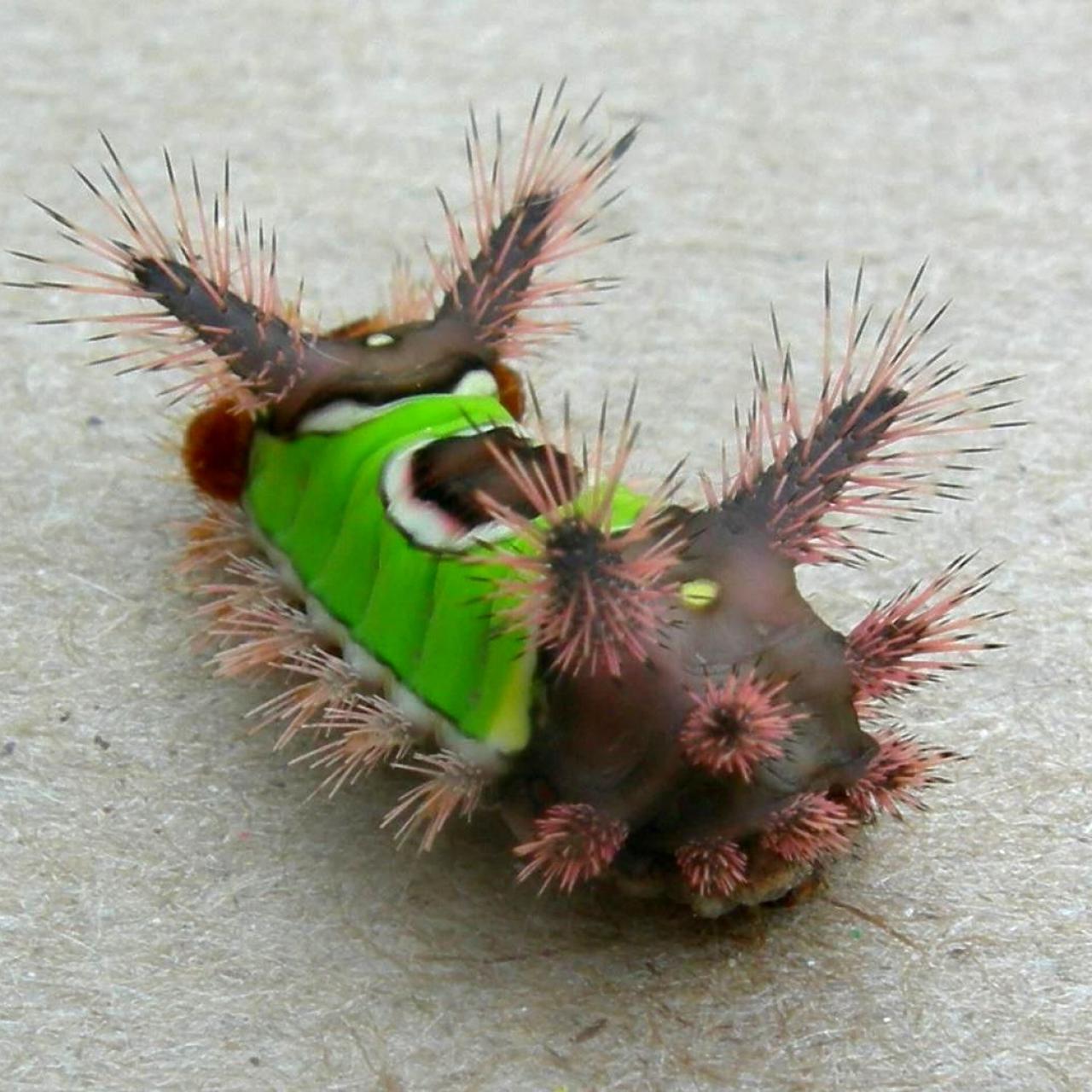
The Saddleback caterpillar might look interesting with its unique shape, but its appearance belies its potential danger. This caterpillar’s spines are armed with venom that can cause skin irritation and other allergic reactions in dogs. If your dog gets too close to a Saddleback caterpillar, it might experience redness, swelling, and a lot of itchiness.
Signs that Your Dog Has Come into Contact with Poisonous Caterpillar
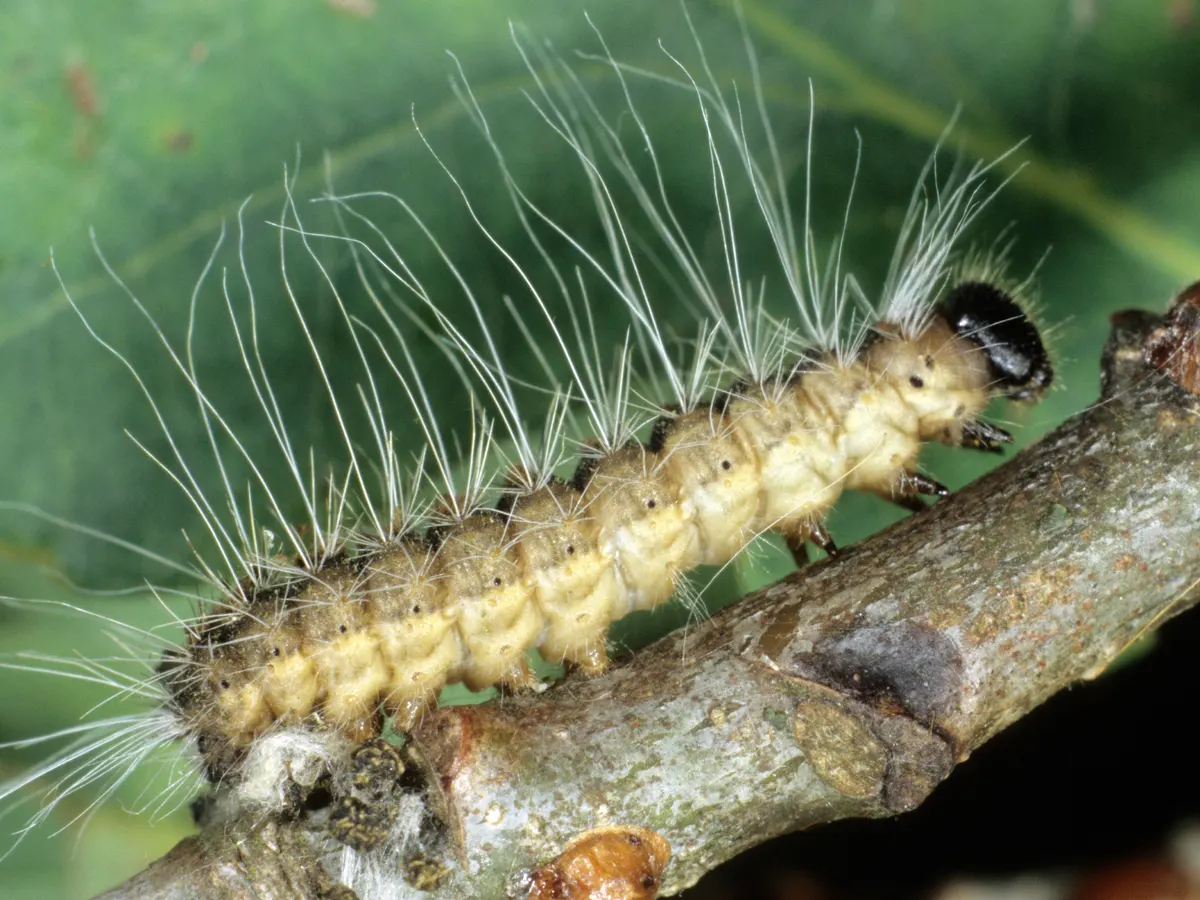
If you have a pet at home, you might be curious about whether caterpillars can pose a threat to them. While most caterpillars are harmless, some can indeed be poisonous to dogs. Here are some signs to watch out for if you suspect your dog has encountered a poisonous caterpillar
1. Increased Salivation
One of the initial signs that your dog might have met a poisonous caterpillar is an increase in salivation. You might notice your dog drooling more than usual. This excessive salivation occurs due to the toxins present in some caterpillars. The toxic substances can irritate your dog’s mouth and lead to a noticeable change in their drooling patterns.
2. Refusal to Eat
Dogs often react to toxins by losing their appetite. If your dog suddenly refuses to eat their food or treats, it could be due to ingesting or coming into contact with a poisonous caterpillar. The toxins can cause nausea and gastrointestinal discomfort, leading to this loss of interest in food.
3. Becomes Less Active
Poisonous caterpillar encounters can make your dog feel unwell. As a result, you might observe a decrease in their usual activity level. Dogs that are usually energetic and playful might become lazy and unwilling to engage in their usual activities. This change in behavior can be a sign that something is amiss.
4. Whimpering
If your usually quiet dog suddenly starts whimpering or whining, it could be a reaction to the toxins from a poisonous caterpillar. The discomfort caused by the toxins can lead to this behavior change. Dogs often use vocalizations to communicate pain or discomfort, so pay attention if your dog starts making unusual sounds.
5. Vomiting
One clear sign that your dog might have encountered a poisonous caterpillar is if it starts vomiting. Vomiting is the body’s way of getting rid of something harmful that your dog ingested or came into contact with. If you see your dog vomiting more than usual and they seem uncomfortable, it’s a red flag. Keep an eye on the color and consistency of the vomit. If you notice any blood or strange colors, it’s crucial to consult a veterinarian.
6. Drooling
Excessive drooling indicates that your dog might have had an unpleasant encounter with a poisonous caterpillar. If your dog’s mouth seems overly wet and they’re drooling more than usual, it could be due to the toxins from the caterpillar irritating their mouth and throat. This can make your dog feel uncomfortable and anxious.
Conclusion
Being cautious around caterpillars is important for dog owners. Although most caterpillars aren’t harmful, some can be dangerous if dogs touch or eat them. It’s best to keep dogs away from caterpillars to be safe.
If a dog touches a caterpillar, it’s smart to watch for unusual signs like drooling or vomiting. If these signs appear, it’s a good idea to contact a vet. Avoiding contact is important, so avoiding areas with many caterpillars can protect your furry friend.
Teaching your dog basic commands like leave can help stop them from getting too close to caterpillars. Keeping your yard clean and caterpillar-free is useful, too!

